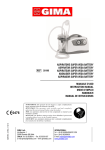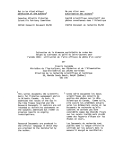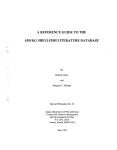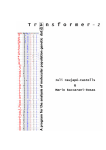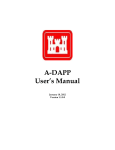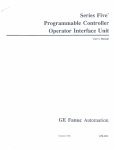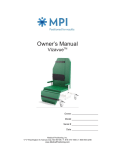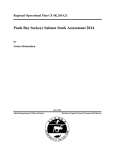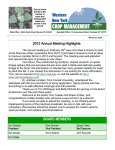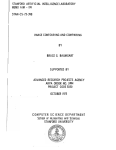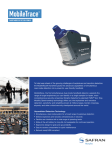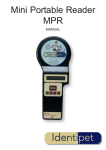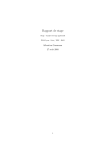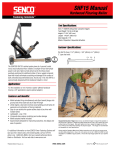Download Project operational plan for the 1990 Bristol Bay red king crab test
Transcript
PROJECT OPERATIONAL PLAN
FOR 3TE 1990 BRISTOL BAY
RED KING CRAB TEST FISHERY PROJECT
Leslie J. Watson
and
Douglas Pengilly
t ' 4K93- 17
Regional Information ~ e ~ o r No.
Alaska Department of Fish and Game
Division of Commercial Fisheries
211 Mission Road
Kodiak, Alaska 99615
April 1993
he Regional Information Report Series was established in 1987 to provide an information access system for
all unpublished division reports. These reports frequently serve diverse ad hoc informational purposes or archive
basic uninterpreted data. To accommodate timely reporting of recently collected information, reports in this series
undergo only limited internal review and may contain preliminary data; this information may be subsequently
finalized and published in the formal literature. Consequently, these reports should not be cited without prior
approval of the author or the Division of Commercial Fisheries.
LIST OF CONTENTS
Page
LISTOFTABLES
................................................
i
LISTOFFIGURES
...............................................
i
FOREWORD
u
...................................................
2
................................................
2
INTRODUCTION
OBJECTIVES
..
............................................
LISTOFAPPENDICES
. . . . . . . . . . . . . . . . . . . . . . . . . . . . . . . . . . . . . .... . . . . . % . . . . . . . . . . .
3
.....................................................
4
. . . . . . . . . . . . . . . . . . . . . . . . . .' . . . . . . .
4
Tagging Station Locations and Itinerary . . . . . . . . . . . . . . . . . . . . . . . . . . . .
Catchsampling . . . . . . . . . . . . . . . . . . . . . . . . . . . . . . . . . . . . . . . . . . . . .
Sampling of Crabs for Tagging . . . . . . . . . . . . . . . . . . . . . . . . . . . . . . . . . .
Tagging Procedure . . . . . . . . . . . . . . . . . . . . . . . . . . . . . . . . . . . . . . . . . . .
4
6
6
6
................................................
7
PIT Tag Recovery . . . . . . . . . . . . . . . . . . . . . . . . . . . . . . . . . . . . . . . . . . . .
Dual-Tagged (PIT and Floy Tags) Crab Recovery . . . . . . . . . . . . . . . . . . . . .
TagRewardLottery . . . . . . . . . . . . . . . . . . . . . . . . . . . . . . . . . . . . . . . . . .
Release of Original Tagging Data to Vessel Captains . . . . . . . . . . . . . . . . . . .
7
7
7
7
...................................................
8
.....................................................
8
METHODS
Tagging Survey and Cost Recovery
TagRecovery
SCHEDULES
REPORTS
.............................................
9
....................................................
13
LITERATURECITED
APPENDIX
LIST OF TABLES
Table
Page
1. Annual abundance estimates (millions of crabs) for red king crab (P.
camtschatica) in Bristol Bay and the Pribilof District from NmFS surveys
(after Stevens and Macintosh 1990) . . . . . . . . . . . . . . . . . . . . . . . . . . . . . . . . .
10
LIST OF FIGURES
Figure
Page
...............
11
2. Ventral aspect of a red king crab abdomen showing the placement of the
10-rnrn PIT tag in the proximal segment of the right, fifth leg . . . . . . . . . . . . . .
12
1. Location of the 1990 Bristol Bay red king crab tagging study
LIST OF APPENDICES
APPENDM A. LOCATION, LAYOUT, AND DEPLOYMENT SCHEDULE
OF THE 75,14 POT TAGGING STATIONS IN THE 1990
BRISTOL BAY RED KING CRAB TAGGING SURVEY
A.1.
Tagging study station locations
...... . .. . ... . . . . . ... . . . . . . . . . .. .
14
A.2.
Layout of the 75 tagging station. 615630,625600, 625630, and 635630
designate ADF&G statistical areas . . . . . . . . . . . . . . . . . . . . . . . . . . . . . . .
16
.. . ... . . . . ... ..
17
A.3.
Layout of stations 1 through 20 in statistical area 625600
A.4.
Layout of stations 21 through 40 in statistical area 615630
. . . . . . . . . .... .
18
A.5.
Layout of stations 41 through 60 in statistical area 625630
... . . . . . . .. . . .
19
A.6.
Layout of stations 61 through 75 in statistical area 635630
. . . . . . . . . . .. ..
20
A.7.
Schematic of 70 pots distributed in an array of 5 stations of 14 pots
.................................................
each
21
Schematic of 70 pots distributed in an array of 5 stations of 14 pots
.................................................
each
22
A.8.
A.9.
Tagging charter itinerary
. . . . . . . . . . . . . . . . . . . . . . . . . . .-.. . . . . . . . . .
23
APPENDM B. DATA FORMS USED IN THE 1990 BRISTOL BAY RED
KING CRAB TAGGING SURVEY
. . . .. . . . . . . . . . . . . . . . . . . . . . . . . . . . . . . . . . . . .
24
. .. .. ..... .. . . . . . ... . .. . ... . . . ..
25
B.1.
Pilot house log form
B.2.
ADF&G crab research data form
APPENDM C. 1990 BRISTOL BAY PIT TAG RECOVERY PROGRAM SAMPLING MANUAL
C.1.
1990 Bristol Bay PIT Tag Recovery Program
.. . . . . . . .. . . .. . ... . . . . .
26
ALASKA DEPARTMENT FISH AND GAME
DIVISION OF COMMERCIAL FISHERIES
PROJECT OPERATIONAL PLAN
Title:
Bristol Bay Red King Crab Test Fishery Project
Yellowbook Project No.: TF-960
Principal Investigator:
Project Leader:
Biometrician:
Assisting Personnel:
Dr. Dana Schmidt
Leslie J. Watson
Douglas Pengilly
William Donaldson
PCN: 1202
PCN: 1857
PCN: 1227
PCN: 1213
Date Submitted (original): July 25, 1990
(final): April 2, 1993
Region: Westward
Fishery Unit: Bering SealAleutian Islands Crab
Fishery: Bristol Bay Red King Crab
Fishery Management Plan: Fishery Management Plan for the Commercial King and Tanner
Crab Fisheries in the Bering SealAleutian Islands
File Name: C:POP90LJW.493
APPROVALS
Level
Signature
Date
Project Leader:
Regional Biometrician:
Research Supervisor:
Regional Supervisor:
Headquarter's Receipt:
Headquarter's Approval:
Headquarter's Recommendation:
Further Review:
Approval:
NOTE:
The original POP was submitted and signed through the level of Headquarter's receipt on July 25, 1990. It was
reviewed by Headquarters in October, 1990, but the f i e containing this information has been lost. What follows is
a recreation of the latest known version of the POP and to the authors' knowledge, reflects accurately the original
content of it.
FOREWORD
The Bristol Bay red king crab tagging project will be funded under the State of Alaska Test
Fishery program. Due to the late notice of project (after the FY91 budgets had been approved),
it does not appear in the FY91 Yellowbook in its true form. There are two budgets for this
program, TF-960 (Bering Sea Crab Test Fishery) and 39571 (Bering Sea King Crab Tagging).
Authorized allocations for the two budgets are respectively, $28.9K and 241.2K, for a project
total of $270.1K. However, test fishery receipts for the project totalled $284K; this latter figure
reflects the amount spent on the project in FY91.
INTRODUCTION
The Bristol Bay red king crab Paralithodes camtschaticus fishery has historically been one of
Alaska's most valuable shellfish fisheries. The abundance of Bristol Bay red king crab has been
assessed annually since 1969 from trawl surveys conducted in the eastern Bering Sea by the
National Marine Fisheries Service (NMFS) (Stevens and Machtosh 1990). Over the course of
the fishery and its assessment many unanswered questions concerning stock status and the
dynamics of the Bristol Bay red king crab population have arisen.
For example, annual population estimates of red king crab in Bristol Bay have shown relatively
major variations (Table I), some of which are not explicable by natural mortality. Variations
appear to be larger than probable errors caused by lack of precision. Because of the uncertainty
associated with the estimate, in-season fishery performance data has been used to modify the
guideline harvest level. In-season adjustments also have significant uncertainty associated with
them, because the effort component associated with current short term fisheries is subject to
variations caused by weather, tides, annual changes in fishing practices, competition fiom more
gear, and possibly other reasons.
In an effort to address these apparent variations in population abundance, NMFS has tagged crab
and released them during annual eastern Bering Sea trawl surveys. Subsequent recoveries have
been sporadic and inconsistent, and the resulting overall low numbers of recoveries have been
insufficient to address major questions concerning population dynamics.
This research is an intensive tagging project, utilizing new tag technology (Passive Integrated
Transponders or PIT tags) to determine the recovery ratio of taggedluntagged legal and prerecruit male red king crabs in a portion of the Bristol Bay commercial crab fishing area.
Preliminary testing of PIT tags on small numbers of the dungeness crab Cancer magister
(Prentice 1986), and red king crabs (W.E. Donaldson, pers. cornrn.) indicates that these tags are
retained through molting and could be detected without sacrificing the tagged animal.
Data from the project will be useful for determining fishing mortality, natural mortality, and
population size. Growth parameters, molting rates and migration will also be obtained. If
feasible, data from the first year will be used to determine if the population estimate from the
trawl survey corresponds with that based on tag recoveries. If the project is successful,
subsequent years data will provide improved estimates of natural mortality, growth and migration.
These data can then be applied to the historical trawl survey data to provide improved estimates
of population size and historical fishing rates.
OBJECTIVES
The short-term goal of this study is to assess the feasibility of utilizing PIT tag technology in an
effort to provide an accurate estimate of the population of legal male red king crabs in Bristol
Bay during the summer of 1990. Long-term goals are to obtain information on the exploitation
rate and natural mortality rate of this population, and the effects of biological parameters on these
rates. Specific objectives of the study are as follows:
1. Determine the feasibility of Passive Integrated Transponder (PIT) tag mark and recapture
studies during the initial year by PIT-tagging 2500 legal males and 2500 sublegal males.
Additionally, half of the ~ 1 ~ - t a legal
~ ~ emales
d
(1250) and half of the PIT-tagged
sublegal males (1250) will also be externally marked with isthmus (or Floy) tags (referred
to hereafter as dual-tagged crabs).
2. Examine approximately 50% of the 1990 Bristol Bay red king crab commercial catch for
recovery of PIT-tagged crabs.
3. Monitor the 1990 Bristol Bay red king crab harvest for recovery of dual-tagged crabs to
provide an estimate of PIT tag loss rates.
4. Estimate the fishery exploitation rate by analysis of markedlunmarked crab ratios from the
commercial fishery.
5. If the first year of the tagging program is successful, plans will be developed for
automated recovery procedures at shorebased canneries and expansion into other Bering
Sea crab fisheries considered.
Tasks to be accomplished are as follows:
1. Issue a contract under the State of Alaska Test Fishery Program for a vessel to conduct
the tagging project. The vessel must also harvest sufficient quantities of red king crabs
to pay the cost of the project ($270,100).
2. Release tagged crabs in accordance with planned procedures (see below).
3. Conduct the tag recovery program during the 1990 commercial crab fishery, in accordance
with planned procedures (see below).
4. Analyze the data and prepare a report to be distributed prior to the 1991 Alaska Board of
Fisheries meeting.
METHODS
The project will be conducted in two phases: (1) tagging survey and cost recovery, and (2) tag
recovery.
Tagging Survey and Cost Recovery
.-
.
Phase 1 of this project will be conducted approximately from August 7 to September 7, 1990 in
Bristol Bay (Figure 1). A chartered vessel will be contracted using the test fishery account for
the purpose of the tagging survey and cost recovery. The contract shall state that the vessel will
retain 50% of the male red king crab 6 inches or greater in carapace width during the first 20
days of the charter. Legal size Tanner crab Chionoecetes bairdi may also be retained based on
product quality. A competitive bid for the sale of the cost recovery crabs will be tendered prior
to embarkation; crabs will be delivered to Dutch Harbor to allow for charter logistics and a preseason test of PIT tag recovery methodology. Four biologists will be on-board the vessel to
conduct biological sampling and tagging.
Tagging Station Locations and Itinerary
The Bristol Bay red king crab management area (Area T) is too large to cover in a 20 day
charter. Tagging effort must therefore be restricted to a smaller study area within Area T that
supports a significant portion of the harvestable population (Figure 1).
Five contiguous ADF&G statistical areas (615630, 625600, 625630,635600 and 635630) were
chosen to be the tagging study area. This area of approximately 5,100 nm2' has produced over
half of the harvest in the last five commercial red king crab seasons. These five statistical areas
also tend to be in the top five producing statistical areas in the last five seasons. Each of the last
five commercial seasons began on 25 September and ended in early October, roughly one to oneand-one-half months later in the year than this year's mid-August tagging study. The annual
NMFS trawl survey, which visits Bristol Bay in June, also indicates that these five statistical
areas support a large portion of the legal crab in Bristol Bay: approximately 70%, 50%, and 40%
of the legal males in Bristol Bay were caught within these statistical areas during the 1990, 1989,
and 1988 NMFS trawl surveys, respectively. Because of the time constraints on the charter, and
because no legal red king crabs were caught at the four NMFS trawl stations within statistical
area 635600 in 1990, sampling for tagging will be limited to statistical areas 615630, 625600,
625630, and 635630.
75 sampling stations have been identified. The location of these stations are given in Appendix
A.1. and illustrated in Appendices A.2. through A.6. Each station is made of 14 pots, set in a
1.625 nautical mile (nm) east to west line with a spacing of 118 (.125) , n m between pots
(Appendices A.7. and A.8.). The location identified for a station in Appendix A.1. is the
midpoint of the string of 14 pots.
The 75 stations are arrayed south to north in groups of five; i.e., stations 1 through 5, 6 through
10, 11 through 15, etc. (Appendices A.2. through A.6.). The distance between stations within
an array is 3 nm, giving a total length of 12 nm for a five station array (Appendices A.7. and
A.8.). All the stations within an array will be set or picked in the same day. An itinerary for
setting and picking pots in a station is given in Appendix A.9. On most days one array of 5
stations will be picked and another array of five stations will be set; i.e., on most days 70 pots
will be set and 70 pots will be picked.
The itinerary in Appendix A.9. is based on the following assumptions:
1) running speed for the vessel is 8 knots;
2) the average time to set a pot and move on 118 nm to the next pot in the same station is
2.5 minutes; and,
3) the average time to pick a pot, dump it, stack it and move onto the next pot in the same
station is 5 minutes.
Under these assumptions, the average time to set the 14 pots in a station is 35 minutes and the
expected time to travel the 3 nm between two stations within an array is 22.5 minutes, giving an
expected time of 4 hours and 25 minutes to set 70 pots in the five stations of an array. Also, the
assumed average time to pick the 14 pots in a station is 1 hour and 10 minutes. Including
running time between stations this gives an expected time of 7 hours and 20 minutes to pick 70
pots in the five stations of an array.
On a day when an array of five stations (70 pots) is picked and another array of five stations (70
pots) is set, the total estimated time to pick and set pots and to travel between arrays of stations
is 15 hours (7 hours and 20 minutes to pick an array, 2 hours and 8 minutes to travel 17 nm to
the next array, 4 hours and 25 minutes to set that array, and 1 hour and 4 minutes to travel to
the array that will be picked on the next day.
For the two days when two arrays are set (9 and 14 August in the itinerary), the total estimated
time for setting and travel is 12 hours and 45 minutes (4 hours and 25 minutes to set each of the
two arrays, 1 hour and 50 minutes to travel between the first array and second array, and 1 hour
and 4 minutes to travel from the second array back to the first).
Under the itinerary in Appendix A.9., the pots will soak two nights before picking except for
those in stations 1 through 5 and stations 21 through 25; pots in stations 1 through 5 and 21
through 25 will soak one night before picking. All station location data will be recorded as
shown in the pilot house log form (Appendix B.1.).
Catch Sampling
The contents of each sampled pot will be unloaded onto a sorting table where the catch of king
and Tanner crabs are sorted by species and sex. From each pot, one half of the male red king
crabs with carapace widths (CW) between 6 and 6.5 inches and one half of the male red king
crabs greater than 6.5 inches CW will be retained for charter cost recovery. Each sampled crab
(tagged or untagged) will be measured, assessed for shell condition, egg clutch condition, and
disease. Crabs unsuitable for tagging will be released alive as soon as possible. In instances
where large numbers of Tanner crabs, immature male red king crabs and female red king crabs
are encountered, the catch will be subsampled to allow additional deck time for tagging.
Sampling of Crabs for Tagging
At each pot one half of the legal male red king crabs greater than 6.5 inches CW and one half
of the sublegal male red king crabs between 6 and 6.5 inches CW will receive PIT tags and
released. At each pot, one half of the legal crabs receiving PIT tags and one half of the sublegal
crabs receiving PIT tags will also receive isthmus (Floy) tags. Only healthy, non-injured crabs
will be tagged; tagged crabs will be handled in a gentle manner and returned on station to the
sea as quickly as possible.
Carapace length, legal/sublegal status as determined from carapace width, shell condition, and
where appropriate, tag number(s) will be recorded for all sampled crabs as shown in the crab
research data form (Appendix B.2.).
Tagging Procedure
Crabs that will be PIT-tagged will be injected with a 10-rnrn Destron/IDI TX1400L 125 kHz
Passive Integrated Transponder. The PIT tag will be injected longitudinally into the proximal
segment of the fifth, right leg as shown in Figure 2. Following injection, the crab will be
scanned with a Destron/IDI HS5102L 125 kHz portable PIT tag detector to verify that the tag
has been successfully injected; the 12-digit PIT tag identification number will be stored on the
detector for subsequent merging with the attendant catch sampling data for that crab. Crabs that
will be dual-tagged will also receive a isthmus or Floy tag as described by Gray (1965); that Floy
tag number will also be recorded on the crab research data form (Appendix B.2.).
Tag Recovery
ADF&G personnel will be stationed at shore-based crab processing facilities in Dutch Harbor,
Akutan, and King Cove and at several floating processors in the Bristol Bay area for the purpose
of recovering PIT-tagged and dual-tagged red king crabs from the November 1990 commercial
fishery. Each sampler will receive instructions and equipment to conduct sampling at their
assigned station as outlined in Appendix C.1.
PIT Tag Recovery
Samplers will scan the tail sections from butchered crabs using DestroniIDI HS5102L 125 kHz
portable PIT tag detectors and will record the vessel name from which the sample was taken, the
number of tail sections scanned and the PIT tag identification numbers of any tail sections that
have detectable PIT tags. Any tail sections that are identified as having PIT tags will be retained
for later analysis. Data will be recorded on the PIT tag recovery pragram-wander data form
(Appendix C. 1).
Dual-tagged (PIT and Floy Tags) Crab Recovery
Dockside samplers, shellfish observers and PIT tag samplers will solicit tag returns of Floytagged crab from vessel and processing crews at the processing facilities where they are stationed.
Floy-tagged crabs will be measured and shell-aged, and scanned for the presence of PIT tags.
The tail sections from these crab will be cut off and retained for later analysis. The crab wiU
then be returned to the offloading brailler for delivery. All dockside sampling information,
capture location data, and names and addresses of those vessel crews and/or processing workers
who returned tags or tagged crabs will be recorded on the tag recovery form (Appendix C.l).
Tag Reward Lottery
Following the closure of the 1990 fishery, all Floy tag returns will be entered in a random
drawing for cash awards ranging from $50 to $500. Captains, vessel crewmembers, and
processing workers who return tags or tagged crabs to ADF&G will be eligible for the random
drawing. Observers who forward tags to ADF&G are not eligible for the drawing. Details of
the tag reward program are outlined in several news releases shown in Appendix C.1.
Release of Original Tagging Data to Vessel Captains
Following the closure of the 1990 fishery and the subsequent return of Floy tags and/or capture
information, participating vessel captains will receive the original tagging information for the
tagged crabs they captured.
SCHEDULES
1
DATE(S)
PERSONNEL
ACTIVITY
1
1190-6190
Schmidt, Donaldson,
Pengilly, Watson
Project planning, secure vessel
charter, equipment purchasing,
hiring, bid for sale of cost recovery
crabs.
2
8190-9190
Schmidt, Donaldson, Clay,
Stallmach, Watson
Conduct tagging survey and cost
recovery fishing, FV Kristen Gail.
3
9190-10190
Watson, Schmidt
Test PIT tag recovery methods, plan
tag recovery effort.
4
11/90
Watson, Schmidt, Pengilly,
et al.
Tag recovery effort.
5
11190-12/91
Watson, Pengilly
Data edit, entry, analysis, and report
Prep.
REPORTS
DATE
PERSONNEL
REPORT
10191
Watson, Pengilly,
Donaldson, Schmidt
A pilot mark-recapture study using external tags
and implantable Passive Integrated Transponder
(PIT) tags on red king crab in Bristol Bay,
Alaska. RIR No. 4K91-21.
1992
Donaldson,Schmidt,
Watson, Pengilly
Development of a technique to tag adult red king
crab, Paralithodes camtschaticus (Tilesius, 1815),
with Passive Integrated Transponder Tags. Jour.
Shellf. Res. 11(1):91-94.
4/93
Watson, Pengilly
Project Operational Plan for the 1990 Bristol Bay
red king crab Test Fishery project. RIR No. 4K93- 17.
LITERATURE CITED
Gray, G.W., Jr. 1965. Tags for marking king crabs. Progr. Fish-Cult. 27:221-227.
Prentice, E.P. 1986. A new internal telemetry tag for fish and crustaceans.
A.K. Sparks,
editor. Marine farming and enhancement; proceedings of the fifteenth U.S.-Japan meeting on
aquaculture, Kyoto, Japan, October 22-23, 1986.
Stevens, B.G. & R.A. Macintosh. 1990. Report to industry on the 1990 eastern Bering Sea crab
survey. Ak. Fish. Sci. Center Proc. Rpt. 90-09.
Table 1.
Annual abundance estimates (mLUtons of crabs) for red king crab (P.
camtschttcu) in Bristol Bay and the Pribilof District from NMFS
surveys (after Stevens and Macintosh 1990).
Males
Sfiea(mrn)
Width (in)
< I 1 0 110-134 2135
~ 5 . 2 5.2-6.5 26.5
Females
Total
<90
4.5
>90
5
Lower
Upper
-+%
"Carapace length (mm).
'~irnitedsurvey in 1971, not used for population estimate.
'1 973 and 1974 estimates considered unreliable.
!Mean i:2 standard errors for most recent year.
Total
Grand
Total
Study A r e a -f
Dutch Harbor
Figure 1.
Location of the 1990 Bristol Bay red king crab
tagging study.
Figure 2. Ventral aspect of a red king crab abdomen showing the
placement of the 10-mrn PIT tag in the proximal segment of
the right, fifth leg.
APPENDIX
Appendix A . I. Tagging s t u d y s t a t i o n l o c a t i o n s .
STATION I NORTH LATITUDE
I WEST LONGITUDE
I ...............................................
.................................................
I
Degrees Minutes Seconds
I
Degrees Minutes Seconds
Appendix A . 1.
(page 2 of 2 )
STATION 1 NORTH LATITUDE
(
...................................................
I Degrees Minutes Seconds
I WEST LONGITUDE
/ Degrees Minutes Seconds
~ p p e n d i xA - 2 - Layout o f t h e 75 t a g g i n g s t a t i o n s .
615630, 625600, 625630, and 635630 d e s i g n a t e ADF&G s t a t i s t i c a l
areas.
-DEGREES LONGITUDE
Appendix A . 3 .
L a y o u t o f s t a t i o n s 1 t h r o u g h 20 i n s t a t i s t i c a l a r e a 625600
STAT AREA 625600
-DEGREES LONGITUDE
17
~ p p e n d i xA.4. Layout of s t a t i o n s 21 through 40 i n s t a t i s t i c a l a r e a 615630.
STAT AREA 615630..
-DEGREES LONGITUDE
18
Appendix A.5.
Layout of s t a t i o n s 41 through 60 i n s t a t i s t i c a l a r e a 625630.
STAT AREA 625630
-DEGREES LONGITUDE
19
~ p p e n d i xA.6.
L a y o u t of s t a t i o n s 6 1 t h r o u g h 75 i n s t a t i s t i c a l a r e a 635630.
STAT AREA 635630
-DEGREES LONGITUDE
20
Appendix A . 7 . Schematic of 7 0 pots d i s t r i b u t e d i n an a r r a y of 5 s t a t i o n s o f 14
pots each. NOT DRAWN TO SCALE.
NAUTICAL MILES
21
Appendix A. 8.
p o t s each.
Schematic o f 70 p o t s d i s t r i b u t e d i n an a r r a y o f 5 s t a t i o n s o f 14
DRAWN TO SCALE.
NAUTICAL MILES
22
Appendix A . 9 . Tagging c h a r t e r i t i n e r a r y .
Leave Dutch Harbor.
A r r i v e a t s t a t i o n 1 i n S t a t i s t i c a l Area 625600.
Set 1-5 and 10-6. Return t o 5.
Pick 5-1. Set 11-15. Return t o 6.
Pick 6-10. Set 20-16. Return t o 15.
Pick 15-11. Return t o 16.
Pick 16-20. Travel t o 25.
Set 25-21 and 30-26. Return t o 21.
Pick 21-25. Set 35-31. Return t o 30.
Pick 30-26. Set 36-40. Return t o 31.
Pick 31-35. Set 45-41. Return t o 40.
Pick 40-36. Set 46-50. Return t o 41.
Pick 41-45. Set 55-51. Return t o 50.
Pick 50-46. Set 56-60. Return t o 51.
Pick 51-55. Set 65-61. Return t o 60.
Pick 60-56. Set 66-70. Return t o 61.
P i c k 61-65. Set 75-71. Return t o 70.
Pick 70-66. Return t o 71
P i c k 71-75. Begin r e t u r n t o Dutch Harbor.
Return t o Dutch Harbor.
Notes:
Under t h i s plan, s t a t i o n s 1 through 5 and 21 through 25 w i l l soak f o r o n l y one day
before picking; a l l other s t a t i o n s w i l l soak f o r two days before picking. Stations
71 through 75 may be dropped t o reduce days from f i r s t s e t t o l a s t p i c k t o 16.
Another o p t i o n i s t o not include s t a t i o n s 21 through 25, ht t o include 71 through
75
again, reducing days t o 16.
--
-
PILOT HOUSE LOG POT SURVEYS 199 -
Appendix B.I.
Skipper
RegistrationArea
-
If longlining pots distance between pots on string
I)
STATION
*
fm.
Recorder
Vessel
-
-
-
-
Bottom type codes: 1 Rock; 2 Sand; 3 Silt; and 4 Mud.
" Skipper must tell ADF8G crew if pulling gear in reverse order than set.
-
"Lost Potwmust be recorded under "Lift Gear" section by appropriate pot which was lost.
Immediately tell ADFbG deck crew whenever a pot is lost so their deck paperwork can stay in order.
Circle either W=west or: beast.
Revised 7/91
m 6 G CRAB RESEARCH DATA FORM
~ ~ r s e n d iBx. 2 .
I
L L
SPECIES
STATION NUMBER
SEX
BUOY NUMBER
VESSEL
KRISTEN GAIL
cu!ucsb
2 - P. eamlrchrtlurr
3 P. plrtypur
I - Erlmwrw
5 - C. talrdl oplllo
1 L
ddI
6 - C b l d
7 C. oplllo
8 C. rngulatur
9 C.ncclr nrg1st.r
A - L WMSI
0 C. bnrmri
-
-
1 1 I
Brlttd &y
MEASURER
RECORDER
Lb-EamM
~
1-wo
2 hmle
-
l d
1stU
\ -Tm
2 Purple
4-orange
5 Purple b r o w
-
6-Phk
2 Legal
7 Raddlrh
-
shdms
-
a-
-
0 - 3on
0
I-New
2-Old
3 Ye ry Old
0 -Other, d e s c r l k In
1 -&rn%danp&opodr 1'D6d
2 &om%with empty
2 Nbe
3 - N c m e M n r In dutch
q g s cam rnd:or
rmlks
4 Turkllarlans In &tch
3 Clutch 1.29% full
5 Black n u t
-
3 - Brown
1 Subl6gal
-
IElOEGISTRATH3N A R E *
TRAWL HAUL NUMBER
%X
I
[
-
1 D a d egg8 not
apparent
2 b a d eggs 4 0 %
3 h a d eggs >204:
comments
25
-
4-aueh3%59%tu''
-
w9Y
6 - CitJtCI%IOU% full
g.B,m,c"bdm"
,.'cott.gc *Bern' d,sea~,
8 - Shell r u t
Appendix C-1,
1990 B r i s t o l B a y P I T T a g R e c o v e r y P r o g r a m .
1 9 9 0 B R I S T O L BAY
P I T TAG
RECOVERY PROGRAM
Leslie J. Watson
October 1 9 9 0
Appendix C.1.
(page 2 of 3 1 )
Logistics
Bunkhouse Notes
Instructions For Samplers
2
Ob j ectives
2
Introduction
2
Equipment
Safety
3
Interaction With ~rocessin~%tafP 3
Managing and Maintaining Your
Equipment
4
Operating the Reader and scanning : 5
Catch Sampling
PIT Tags
PIT-Floy Tags
Separated ADF&G Floy Tags and
Tags From Other Agencies
Appendix C - 1 -
(page 3 of 31)
LOGISTICS
It is anticipated that most samplers will be coming to Dutch Harbor
around November 9 but it could be sooner or later, depending .on the
fishery. Be prepared for last minute notification of departure
date (Election Day is November 6, so absentee voting is advisable).
I will be in Dutch Harbor by October 25; call me there if you have
any questions.
Dutch Harbor bunkhouse phone number is:
Dutch Harbor ADF&G office number is:
581-1562
581-1239
The project will be headquartered at the Dutch Harbor bunkhouse
(eating, sleeping, down loading data to computers, charging
batteries, communications). Most of the staff will be stationed
rans sport at ion and meals
in processing plants in Dutch Harbor.
will be provided.
Meals will be provided at either the Dutch
Harbor bunkhouse (prepared by all) or at the processing facility
you are working at. There will be no charges to restaurants in
Dutch Harbor. We will assign staff to grocery shop, as necessary
(remit all charges for groceries to Leslie). Per diem claims (if
any) will be made after the project is completed and should be
submitted to Leslie. Copies of any TRs used and all time sheets
should also be submitted to ~eslie. Seasonals will be activated
on the project on the day they fly to Dutch and deactivated when
they return to Kodiak (or town of origin).
Each person will be expected to work 10-12 hour shifts once
deliveries begin.
All staff will be required to keep track of
start/stop times on time sheets. All OT eligible staff will be
paid a maximum of 2-4.5 hours of OT per day once sampling starts.
No OT eligible staff will work more than 10-12 hours in a single
day. Return flights (out of Dutch Harbor) have not been booked;
these flights will be full after the fishery closes so plan on
stand by status at that time.
Bunkhouse Notes
There will be 12-16 people staying at the facility for 7-10 days.
Endeavor to keep both the bunkhouse and yourself as clean as
possible.
There are not enough beds for all, so remember your
sleeping pads.
Boots and other wet, smelly gear will not be
permitted inside the main living area or bedrooms (there are 2
entrances that can be used to hang up gear). Only loczl calls can
be made from the bunkhouse phone (incoming, non-collect long
If you need to make long
distance calls can be received, as well)
distance phone calls, the airport has several long distance only
phones (5 minute walk down the hill). As shift work is anticipated .
for the project, please keep in mind that people will be trying to
sleep at odd hours.
.
Appendix C.1.
(page 4 of 31)
INSTRUCTIONS FOR SAMPLERS
Obi ectives
The primary objective of this program is to sample the commercial
catch of Bristol Bay red king crab for the recovery of PIT (Passive
Integrated Transponder) tags.
The secondary objective is to
determine the loss rate of the PIT tag on individual crab.
Introduction
4,700 legal male red king crab were tagged in the proximal segment
of the right, fifth leg in August 1990. Half of these crab (2,350)
were also externally marked with a yellow Floy (spaghetti tag) and
will hereafter be referred to as PIT-Floy crab. As it is easier
to detect PIT tags from the separated tail section of the crab, we
will be working almost exclusively with tail sections from
butchered crab. In order to fully test the success of the PIT tag,
approximately 700,000 to 1,425,000 crab tails will need to be
'scanned1. Per sampler, that's 4,000 - 8,000 tails per day for 10
days! Attached are several news releases that briefly explain the
program (diagrams of Floy and PIT tag placement included).
Each sampler needs to bring rain gear, boots, sleeping bag and pad,
and sufficient clothing for cold, wet worGng ca-nditions.
ADF&G will supply gloves and all sampling equipment listed below.
1 portable ID Reading System (scanning wand w/rubber
cover, reader, carrying strap and manual).
Extra battery (Portalac, cord and fanny'pack)
Battery charger(for both internal and externalbatteries)
Recovery forms (2 forms, 10 each)
~ i m esheets
Tallywhacker
1 box Ziplock bags and 1 roll electrical tape
News releases
Clipboard and pencils
Ear plugs
Rite-in-rain notebook
Sampling Instructions
Equipment bag
Appendix C-1.
(page 5 of 3 1 )
Safety
DO NOT REACH INTO AUGERS, GRINDERS OR TROUGHS LEADING TO AUGERS OR
GRINDERS TO RETRIEVE CRAB TAILS. It will not be necessary to get
every single crab tail that goes by.
Long hair, scarfs and
clothing strings or tabs should'be tucked securely away to prevent
obvious entangling.
If you treasure your hearing, wear the
Walkman headsets should not be used while
supplied ear plugs.
working in the plant.
Adhere to whatever safety and sanitary
procedures required by the plant.
Interaction With processins Staff
In order to most efficiently sample the catch, you will probably
be stationed directly on the processing line. All processors have
been notified that we will be sampling during active processing.
YOU may be assigned a particular processing worker to help you.
Because you must know what vessel's catch you are working on, you
will have to stay in contact with the unloading foreman, as well.
Appendix (2-1- (page 6 of 31)
Manasins and ~aintaininsYour Eaui~ment
As there are no back-up readers, scanners or batteries, you will
need to service your gear carefully prior to, and after sampling.
When the wand trigger is depressed, maximum power is being drawn
from the battery. For this reason, DO NOT TAPE THE TRIGGER DOWN.
Also, the internal battery automatically shuts down every 13-18
minutes if the trigger is continuously depress'ed. Turn the machine
off when not in use (breaks, lunch, etc. ) . When the battery is
getting low, you will see an error message in the window which says
lvLOW BATTERYn. (You have very little scanning time left at this
point; call for help! ! )
CAUTION:
If you have turned the reader on and you see a blank
window (no message of any kind), YOU ARE NO LONGER
SCANNING.
A fully charged internal battery will last from 5-11 hours,
depending on use. The extra battery (Portalac 12V) should provide
at least 12 additional hours of power. It is recommended that you
begin each shift with the reader hooked up to the external battery
(power will be drawn directly from the Portalac) After your shift
is completed, you will need to recharge the batteries.
The
internal battery takes 6.5 hours to recharge when fully drained,
the Portalac requires 1-3 hours. Keep the Portalac battery out of
water (fanny pack supplied).
.
*
L
The readers and scanning wands are not waterproof. To protect the
reader, encase in ziplock bags (you can read window and operate
buttons through the bag).
The scanning wand has a detachable
rubber cover that must be in place during scanning as you will be
passing this surface directly over the crab tail.
After each
shift, the reader and wand (rubber cover removed and rinsed) should
be wiped clean and left out to air dry overnight.
During breaks, leave equipment in a secure, dry place.
Appendix C - 1 -
(page 7 of 31)
Operatins the Reader and Scanner
Complete instructions for operating the reader and scanner are
given in the attached manual. Please read it carefully. For quick
reference, here are the high points:
1.
scanning wand needs to be firmly attached to reader.
2.
There are only three buttons to push on the reader.
- Red rocker switch. Press to the right to turn reader
on, press to left to turn off.
- MENU button. This button cycles through the top menu
(scan only-scan/send-SCAN/STORE-dump
system-then back to scan only).
mem to port-set up
-
START/STOP button. This button will start the function
selected on the menu button or will cycle through the sub
menus.
3.
The main operation mode to be used is SCAN/STORE (read
all about it on page 6 of attached manual). This mode
scans and stores any detected tags. If you get 'lost1
on the menu, you can usually get back to scan/store by
repeatedly pushing the menu button.
If that doesn't
work, 'reset' the menu by turning the machine off. The
reader retains in memory any ID tag numbers that were
read and stored, even if the machine is turned off.
4.
The effective scanning distance of the wand is less than
2 inches. Run the wand directly on the.tai1 section to
insure contact with tagged body part. .
CAUTION:
You will want to avoid the sub menu 'CLEAR LAST ID?'.
If you inadvertently press the 'start/stopl button when
this message is in the window, you will delete the last
tag number that you detected. Press 'menu' button until
you see READY displayed and continue scanning.
CAUTION:
Never respond positively to the sub menu 'CLEAR MEM1 as
you will delete all of the tag numbers stored in memory.
Appendix C . 1 -
(page 8 of 31)
CATCH SAMPLING
PIT Taqs
Samplers must document their sampling activities daily on the PIT
TAG RECOVERY PROGRAM - WANDER DATA FORM (see attached example).
The basic sampling unit is each vessel's delivery. You must know
what vessel's crab you are working on.
There may be mixed
deliveries; just note both vessel names in tke vessel column. If
you move to another plant, use a new form. Detailed instructions
are as follows:
1.
Turn machine on. Press MENU button until you arrive at
SCAN/STORE. Press start/stop button to select SCAN/STORE
(the word READY should come up in the window). First,
scan/store your READER ID NUMBER. This identifies the
reader to your data file and should also be done
periodically throughout the day to assure you that your
reader is working.
2.
Scan every tail section possible, regardless of
condition. Before you begin working on a new vessel's
catch you must scan/store the INTERRUPT ID NUMBER. At
the end of your working day, scan the INTERRUPT ID NUMBER
before you turn the machine off.
You will also be
documenting these activities on your WANDER DATA FORM
(which will enable us to match the information on the
At-sea scanners
form to the information on the rwder)
will follow the same procedure.
3.
Collect all tails that have PIT tags in ziplocks and
return them to the bunkhouse (or place in cold storage
if on vessel).
4.
Use the tallywhacker or a notebook to keep track of your
sample size as the reader does not have an internal
counter. Counting in multiples (5, 10, etc.) will save
time. Sample size is determined by counting only the
scanned tails bearing the right, fifth leg. You will be
scanning the underside of the tail (where all the guts
are); make sure you know which is the right leg. The
diagram show the right leg from the shell side (outside).
5.
Return to bunkhouse as soon as you are done scanning with
the machine and completed forms. Data on the readers
will be down loaded to a computer, the memory cleared and
the machine returned to you for cleaning. Samplers on
vessels will not clear the memory at any time.
6.
Contact me at the bunkhouse if problems arise or you run
out of crab to scan.
Appendix C.1,
(page 9 of 31)
PIT-Floy Tass
~ccasionally, there will also be whole, tagged crab to sample.
These crab will be sampled directly from vessels at the time of
delivery, but processing workers may bring these crab.to you in
the plant, as well.
The PIT-Floy crabs have a yellow spaghetti
tag which has an orange tab bearing the words 'LEAVE.TAGON CRABNOTIFY ADF&G1. There is no reward for the tag. It is imperative
that the tag be on the crab in order to test the PIT tag loss rate.
Specific instructions are as follows:
1.
Use the vessel's measuring stick to determine if the crab
is legal.
If it is sublegal (less than 6 and 1/2
inches), sample as for legal crab then throw the crab
overboard (pull the Floy tag first!).
2.
All recovery information must be. recorded on the TAG
RECOVERY FORM by the sampler (see attached example).
Pull the Floy tag off the crab and record the number
along with all recovery information provided by the
captain. Be sure to get the captain's name and address
so that the original tagging information can be forwarded
to them.
3.
Shell age and size information is not necessary this
year, so leave these columns blank.
4.
Select SCAN ONLY on the menu button.
Scan the tail
section area for the PIT tag and record the 10 digit
number in the column 'PIT NO1. It's a little harder to
scan this area on a live crab; you may have to jockey the
fifth leg and the wand around to get close enough to
detect the PIT tag. Take your time, we need to be sure
the tag is either there or not there.
5.
In the column marked PIT, enter appropriate action
(l=detected, 2=not detected, 3=not checked, 4=not
applicable)
.
6.
Return Floy tags with data forms at end of day.
Separated ADF&G Floy Taqs and Tass From Other Asencies
We will take any tags that are turned in, regardless of tagging
agency (including loose Floy tags from our own program). The ~ n i v .
of Washington tagged crab in Herendeen Bay this summer (see news
release) and there may be NMFS tags out, as well.
Take the tag first, then get any available information. Record
the information on the TAG RECOVERY FORM and note tagging agency
in comments section. Record '4' in the PIT column for all loose
tags and return tags with forms at end of day to bunkhouse.
Thanks in advance for all your hard work, and good luck.
'
Appendix C-1,
(page 10 of 31)
COMMERCIAL FISHERIES
NEWS RELEASE
ALASKA DEPARTMENT
OF FISH & GAME
Westward Region
211 Mission Road
Kodiak-,AK 99615
STATE OF ALASKA
Department of Fish and Game
Don W. ~ollinsworth,Commissioner
Ken Parker, Director
Division of Commercial Fisheries
IMMEDIATE RELEASE
Contact:
Date:
Leslie J. Watson
Research Biologist
October 1, 1990
ATTENTION ALL BRISTOL BAY KING CRAB FISHERMEN AND PROCESSORS
Under the support of the Alaska Department of Fish and Game's test
fishery program, a pilot tagging study was implemented for the
purpose of providing information on the Bristol Bay red king crab
population. Data from this study should propvi.de refined population
estimates and exploitation rates along with infohation on natural
mortality, growth, and migration. As an aid towards achieving
these goals, the Department is testing a commercial application of
a small, internal PIT (Passive Integrated Transponder) tag within
commercially important crab populations. It must be stressed that
inseason tag recovery data will not affect (or be:used to adjust)
the announced mid-point guideline harvest level.
The tagging survey was conducted from August 7-27, 1990 on board
the chartered crabber, F/V K r i s t e n G a i 7 . A total of 490 pots were
pulled from 70 locations. Station locations were generally located
in historically productive commercial fishing areas.
The tagging effort exceeded presurvey expectations of marking 5,000
male king crab. A total of 6,700 male king crab were PIT-tagged
(4,700 legal and 2,000 sublegal). PIT tags were injected into a
proximal segment of the fifth, right leg of the crab near its
attachment to the tail section. Half of the legal size PIT-tagged
crab were also externally marked with yellow spaghetti tags in the
isthmus portion of the crab between the carapace and the abdominal
flap (see diagram). The purpose of the dual tagging is so that PIT
tag loss rates can be evaluated over time as it is not known how
long PIT tags will remain in the crab.
Approximately 4,000 C. b a i r d i Tanner crab were also tagged during
the survey (recovery of these tags will be addressed in subsequent
news releases).
,
Appendix C - 1 -
(page 11 of 31)
News Release
October 1, 1990
In order to test the program prior to the November fishery, PITtagged crab were 'seededt into the retained-for-sale crab so that
detection of the tags could be tested under actual processing
conditions. With the cooperation of processing staff at Royal
Aleutian Seafoods in Dutch Harbor, ADF&G samplers monitored the
delivery by scanning the tail sections of approximately 4,450
butchered crab. This effort was very successful, resulting in an
overall recovery rate of 82% of the PIT-tagged crabs (81 of the 99
PIT-tagged crabs were detected).
Industry response to the program was.quite favorable, with most
area facilities indicating general approval to conduct this project
within their facilities during processing.
The Department is
soliciting the cooperation of fishermen, processors and processing
workers in the recovery and documentation of tagged, legal male red
king crabs during the upcoming November fishery.
Department
personnel will be stationed in Dutch Harbor and outlying areas to
monitor red king crab deliveries during processing. This is a two
part program involving one or a combination of both tag types:
-
-
PIT taq Droqram. Recovery methods will be addressed in
a separate news release due to the magnitude of the
proposed recovery effort. processing facilities will be
contacted individually by the Department for the
placement of staff within the plant.
Dual tas (s~aahetti/PITlnrosram. This program will be
directed at vessel captains for the recovery and
documentation of dual-tagged crab. As an incentive for
return of these crab, the original tagging location data
will be forwarded to participating vessel captains after
the season closes.
Xing crab ahovinp tig through iathmua
.
5th l e g
-
5th 1.9
King crab shoving peaition o t pit tag
Appendix C-1.
(page 12 of .31)
.-.
COMMERCIAL FISHERIES
NEWS RELEASE
ALASKA DEPARTMENT
OF FISH & GAME
Westward Region
211 Mission Road
Kodiak, AK 99615
STATE OF ALASKA
Department of Fish and Game
Don W. Collinsworth, Commissioner
Ken Parker, Director
Division of Commercial Fisheries
IMMEDIATE RELEASE
Contact:
Date:
Leslie J. Watson
Fishery Biologist
October 15, 1990
ATTENTION ALL BRISTOL BAY CRAB FISHERMEN
The Alaska Department of Fish and Game (ADF&G) is asking for
your help in the recovery of tagged red king crab and C. b a i r d i
Tanner crab during upcoming commercial fishing seasons. ADF&G
tagged legal red king crab, sublegal red king craw and C. b a i r d i
~anner crab in August 1990.
Recoverg data should provide
fishery managers with additional data on crab $opulations in the
Bristol Bay area.
The ADF&G crab tag is yellow with an orange tab which says
I1LEAVE TAG ON CRAB - NOTIFY ADF&Gn. All king crab bearing the
yellow tag have also been marked with internal PIT tags (see
diagram).
The Department is requesting that captains who catch legal size,
tagged red king crab do the following:
1.
Keep only legal-size red king crabs during the red king
crab season. Release undersize king crab and C. b a i r d i
Tanner crab with tags intact.
2.
Record vessel name, captain's name, tag number, date and
location (latitude-longitude) of capture on attached
form.
3.
If possible, keep tagged crab separate from the rest of
the tanked crab (tethered or bagged in burlap).
4.
Contact Department personnel or shellfish observer upon
arrival at processing facility so that crab can be
properly sampled and returned for delivery.
'
~ p p e n d i xC - 1 -
(page 13 of 31)
October 15, 1990
News Release
If Department personnel are
whole, legal crab:
.
available at the dock to sample
1.
Remove tag and either remove entire tail section or pinch
off both fifth legs (see diagram)
Place all tags and
body parts in a ziplock bag and refrigerate or freeze.
2.
Record vessel name, captain's name, tag number, date and
location (latitude-longitude) of capture on attached
form.
3.
Notify Department personnel upon delivery so that tags,
body parts and capture information--can
. be collected.
.
.
King crab ahowing tag through isthsum
5th leg
King crab ahowing p08iti0n
KING CRAB TAG RECOVERY INFORMATION
Vessel Name
File
No.
1
2
3
4
5
6
Tag
Number
Captain
Capture
Date
mm/dd/yr
Latitude - Longitude
or
Loran C (X - Y)
5th l e g
of pit tag
Appendix C-1.
(page 14 of 31)
.-
NEWS RELEASE
ALASKA DEPARTMENT
OF FISH & G A M E
I
Westward Region
211 Mission Road
Kodiak, AK 99615
Department of Fish and Game
Don W. Collinsworth, Commissioner
Ken Parker, Director
Division of Commercial Fisheries
Contact:, Leslie J. Watson
Fishery Biologist
IMMEDIATE RELEASE
Date:
October 15, 1990
ATTENTION ALL BRISTOL BAY CRAB FISHERMEN
The University of washington (UW) has implemented a tagging study
of Herendeen Bay red king crab. The Department is assisting in the
collection of tags and recovery data during the November fishery.
Fishermen finding crab with University of Washington tags are
requested to do the following:
9
,
1.
2.
3.
I
L
Remove tag and record sex, date caught, and location
(either lat/long or Loran coordinates).
Return sublegal male and female red king crab to the sea.
Legal male red king crab may be retained for delivery.
Notify Department personnel upon delivery so that tags
and capture information can be collected.
HERENDEEN BAY KING CRAB TAG RECOVERY INFORMATION
Vessel Name
File
No.
Tag
Number
Captain
Capture
Date
mm/dd/~r
Latitude - Longitude
or
Loran C (X - Y )
1
2
3
4
5
For more in formation on the U of W program, contact:
Dr. avid Armstrong
University of ~ashington*WH-10
Seattle WA 98195
(206)
543-6132
41
Sex
M/ F
Appendix (2.1,
(page 15 of 3 1 )
PIT TAG RECOVERY PROGRAM
NAME:
-
WANDER DATA FORM
SHIFT HOURS:
PLANT:
-
------------------------------*----------------------------------
----- ---------DATE1
READER il
L----------
.------------SAMPLE SIZE
VESSEL
------ ---------- .---------.-------------
......................
COMMENTS
me--------------------
T A G
Spec ies
Sex
R E C O V E R Y
Recorder
b P
W
TC
- width
2 = old
3 = very
old
PIT.
F O R M
No.
1 =
2 =
3 =
4 =
Detected
~ o detected
t
Not checked
Not applicable
P
21
a
fD
3
a
P.
x
COMMENTS ( S k i p p e r ' s '4 Name and A d d r e s s )
C]
I
1
2
C1
1
ADF&G TIME ANI) ATTENDANCE REPOIlT-'T'lhlESlIEET ENTRY SYSTEhl ('I'SI.:)
SSN: -
Name:
Payroll RD:
Overtime Exempt:
Uargaining Unit
YES
NO
Pay Type:
Salaried
GGU
SU
fl Hourly
Pay Period Ending:
w
Division:
------
6
2
n
#
I-'
I
I-'
4
We a r t i f y hat the informalion providcd above is true and correct.
--
LEAVE CODES:
A
S
P
I
H = Holiday
0 = Other --Attach PINK' copy of leure slip
Personal
E~nployceSignature
Date
--Supervisors Signature
..-.
.
-
[)ale
--
~.
-
Annual
Sick
- Data Entry
- Date
Approving Officer
--.- Date
Appendix C - 1 -
(page 18 of 31)
STATE OF ALASKA
D I V I S I O N OF COMMERCIAL FISHERIES
211 MISSION ROAD
KODIAK, ALASKA 99615
CLAIM FOR PAYMENT OF SUBSISTENCE FOR FISH AND GAME PERSONNEL ABOARD COPlrlERCIAL
FISHING VESSEL OR PRIVATE FACILITIES !4HILE ENGAGED I N COLLECTING RESEARCH DATA
F o l l o w i n g i s t h e c l a i m f o r payment o f room and/or board p r o v i d e d t o :
(Name o f F i s h
I&
Game Empl oyee)
w h i l e he was aboard
(Name o f Vessel o r F a c i l i t y )
from:
(Dates )
w h i l e engaged i n c o l l e c t i n g r e s e a r c h d a t a f o r t h e Department o f F i s h & Game
MAXIMUM ALLOWABLE IS:
$21.00 p e r day.
Number o f Meals @ $3.00
Total:
$
Number o f N i g h t ' s Lodging @ $12.00:
Total:
$
TOTALCLAIMIS:
$
=?a-
Is/
P
( A u t h o r i z e d S i g n a t u r e o f Vessel
o r Faci 1 i t y
F i s h & Game Employee
S o c i a l S e c u r i t y Number o r Company
Tax I .D. Number
l ~ a1ii ng Address)
( C i t y , S t a t e and Zipcode)
(
)
(Telephone number)
..............................................................................
For Department Use Only
(Code f o r Above P r o j e c t )
(Supervisor o r P r o j e c t Leader S i g n a t u r e )
45
Appendix C-1.
( p a g e 19 of 3 1 )
674Pt PLG
P I T TAG RECOVERY PROGRAM
-
WANDER DATA FORM
: J6 t k Q h n f e v M SHIFT HOUR8 :o
m
PLAN* : S
~ I D SS
_________---_-_____-----------------------------------------....................................
----------*----------
N-
00-
READER #
VESSEL
'
SAMPLE S I Z E
COMMENTS
----------..----------..-------------a----------------------
24% 2
~ ~ 3 9 1WDK
0 ~
-----------------.-----------.-------------------------------------
l r - q - ~ q7
r r-9-s9
KY RIG
_-___------------._----------.------------------------------------I/
/I----_------------------------.-----------------9-84
II
CAhlDLG
l/*949
/I
11- 9 -89
If
CLOUD
1578
%
&,me
4%-
4-h
&L.is&d
A
9
------------------
d
ZO/O
----_------------__----------------------------------------------------------------.---------------------_______-_--------__-
_____-_------------------------------------~--------------------------------------------------------------------------------------------------------------------------------.----------------------
-------------------------------------------.----------------------
---------------- ---------------___-----------------------------------------------------------------------,----------------------
-------------------------------------------.----------------------
------------- ----------------------
Species
ex+,<,
&~
~ ~ c r - k
T A G
F O R M
R E C O V E R Y
;.:a'
Recorder
d ~ fkr 0.Lank+ <"
STATISTICAL
TC
- width
2 = 0J.d
3 = very
old
2 = N o t detected
3 = N o t checked
4 = N o t applicable
P
'u
'0
(0
3
a
'4
!-'.
b4
COMMENTS (skipper's N a m e and Address)
t"1' , K ~ / ? / ~ - i r ~ l s ; ~ &- ~(&{
~ , &2&-p 6wh
I
I
v-
3
2'' S f .
a
&A/%&
n
w
n
Appendix C - 1 .
(page 21 of 3 1 )
Portable
Reading System
HS5101, HS5102 Series
Destron/lDI User Manual
810-0005-300
ECO # 970, Rev. A
Lit Code #2002
4/20/90
O 1990 DestronIlDI Inc.
Appendix C.1.
(page 22 of 3 1 )
Portable ID Reader
Table of Contents
Page
Title
Chapter I: Portable ID Reader
IDReader Capabilities .......................................................... 1
.............................................................
2
................................................................
3
Menu-Based Design
Reader Operation
Preparation
...............................................................3
Batteries and Fuses ...................................................... 4
'15%
i
............................................................... 4
Automatic Shutdown .......................................;............ 5
Recharging
Non-Volatile Memory ....................................... :............ 5
Operation Modes .................................................................
Scan Only ................................................................
5
5
ScanISend :............................................................... 6
ScanIStore ................................................................ 6
Dump Mem To Port ..................................................... 7
Set Up System ........................................................... 8
Trouble Shooting ................................................................ 9
Appendix C.1.
(page 23 of 3 1 )
Chapter 11: Communications Interface
Connector ......... ....... ... . .....
...............................
Serial Communications.. ................. ...... . ... .... . ...... .... .......11
List of Figures
Figure Title
Page
Chapter 1:
2
...... 2
Menu Selections ..................................................... 3
3
Connection Diagram ................................................ 3
1
Portable ID Reader ............................................
-Chapter 2:
1
Portable Reader Interface with DTE Handshake. .................12
Appendix C - 1 -
(page 24 of 31)
1
Portable I D Reacler
ID READER CAPABILITIES
The portable, radio-frequency (RF) identity-tag reader provides a full range
of operational functions in a package small enough to be carried into the lab,
the stable, the warehouse, and out into the field for on-the-spot
identification of RF tags ranging in size from 3 112" disks used in industrial
applications down to syringe-implantable veterinary tags.
Appendix C - 1 -
(page 25 of 3 1 )
2 DestrodlDII
The reader incorporates a hand-held scanner wand and exciterlreader
. electronics enclosed in a separate box. Accessories include a nylon cany
strap and carry sack.
The reader is batteky-operated and can be recharged, or operated directly
from any standard 110 VAC outlet, by using the battery charger included
with the unit. The reader can be used in a simple "read only" mode, or
Figure 1-Portable
ID Reader
configured to store tag numbers in memory, andlor send numbers to an
external computer, printer, or modem.
MENU-BASED
DESIGN
For simplified operation, all functions available in the reader can be selected
from either the top menu or several submenus. Menu selections are shown
in Figure 2.
Appendix C - 1 -
(page 26 of 31)
Portable ID Reader
3
SET UP
SYSTEM
I
1
I
GIq
CLEAR LAST ID?
I
';io
Top Menu
sub Menus
Serial Communication Para meters
Figure 2-Menu
Selections
e
6
READER OPERATION
Preparation
To prepare the ID Reader for operation, connect the handwand to the reader
by screwing the handwand cable to the rear connector on the reader unit.
The connector is keyed, and must be lined up with the keyway by rotating,
then by turning the knurled housing clockwise until the connector is
securely fastened (about one full turn).
Handwand
\Connection
Battery Charger
Connector
1
US232
Figure 3-Connection
Diagram
Connoctlon
Appendix (2.1.
4
(page 27 of 31)
DesfrodDI1
Connect the battery charger to the rear of the reader and plug in to any
grounded 110 VAC outlet.
Press the red rocker switch to the right to turn the reader on and to the left to
turn it off. The LCD display will report the top-menu selection last used
when the reader was turned off, e.g., SCAN ONLY, SCANISEND, or
SET UP SYSTEM, or will display LOW BA?TERY if the reader requires
recharging before use.
If the last function used was CLEAR MEM, the LCD will display SCAN
ONLY.
Batteries and Fuses
Reader fuses are 2A 3AG "regular blow." They are replaceable by the user
as needed. Fuses are located in the back of the reader unit. Use a large, flat
screwdriver and press in slightly on screw slot to depress spring. Turn 114
turn counterclockwise to release. Insert new fuse, then depress with
screwdriver and turn 1/4 turn clockwise to set in place.
The reader comes supplied with a rechargeable battery pack that can
typically support 1000 ID readings before recharging. Each battery has an
expected life of 250 chargeldischarge cycles. Reorder batteries by part
number from DestronIIDI.
Turn the reader off after use to avoid unnecessary battery discharge. T o
optimize battery life, keep the reader charged and ready for extended use by
plugging it into the battery charger when it is to be left for any period of
time (overnight, for example). Under normal use, a fully c h a r ~ e dreader
will work a full eight-hour day without recharging. A battery left in a
state of deep discilarge for an extended period of time (days)
m a y not accept recharging.
To replace the battery, remove cover, loosen the 4 screws to remove old
battery and replace with complete battery assembly, including the two
battery packs. Place assembly at right-angle to battery frame. Tighten the 4
screws and replace cover.
Recharging
Recharge the reader batteries by plugging the battery charger into the back
of the reader, and connecting the charger to grounded 1 10 VAC. The two
LEDs (Light Emitting Diodes), located on top of the charger, remain lighted
while the reader batteries are drawing full power; one LED will blink when
the reader is nearing full charge. Note: with the model 8 101 D l 2 or 8618-1
Appendix C - 1 -
(page 28 of 3 1 )
Portable ID Reader
5
charger, the reader may be used while connected to the charger and to
power. This practice is NOT recommended with other charger models.
Automatic Shutdown
The system automatically shuts down when the battery voltage falls below
the manufacturer's recommended safe operating threshold.87 This prolongs
the useful life of the reader's batteries.
Non-Volatile Memory
The reader is equipped with non-volatile memory, so it retains in memory
any ID tag numbers that were read and stored, and not explicitly cleared.
This feature not only saves tag numbers from day to day, but also saves
stored information even if an operator inadvertently shuts the reader off.
OPERATION MODES
In general, press and release MENU repeatedly to cycle through the top
menu until the display reports the desired operational function. Then press
and release STARTISTOP to begin the function or to cycle through the
submenus. T o terminate the function and/or to re-enter the top menu from a
submenu, press and release STARTgTOP. The display will report the topmenu option from which the submenu selectfon was made. Use of MENU
and STARTISTOP that is particular to a mode is covered below.
To clear a displayed error message, press and release STARTISTOP. The
message will disappear and the program will then resume. Appropriate
corrective actions for specific errors are discussed below.
Scan Only
SCAN ONLY: the simplest tag-reading mode. Select the mode by pressing
STARTISTOP while the display reports SCAN ONLY; then press and hold
the handwand trigger, and the display will report WORKING. If the wand
antenna is in the vicinity of an RF tag, the reader beeps and the display
reports the tag's ID number. In order to read the same tag twice, release the
trigger then depress again. T o read another tag, release the trigger, move the
handwand close to the next tag, then press the trigger again. It is also
possible to simply keep the trigger depressed and move the handwand from
tag to tag to do a number of reads, however, this method uses more power.
This operation can be continued as long as needed. T o return to the top
menu after a series of successful tag reads, press and release
STARTISTOP.
If no tag is near, the reader continues to display WORKING until the t r i ~ g e r
is released, then it displays NO LD FOUND. Press the trigger to return to
SCAN mode. Return to the top menu by pressing and releasing
STARTISTOP.
Appendix C - 1 -
(page 29 of 3 1 )
6 DestrowlDI I
Note that interference may occur if RF tags are close to each other.
Error messages:
LOW BATTERY: Batteries are low. It is recommended that use be
discontinued until the batteries are recharged. To continue use, press either
MENU or STARTISTOP.
ScanlSend
SCANISEND: displays ID numbers as above, and concurrently sends the
numbers to an external device (printer, computer, etc.). This mode transmits
each ID number to an external device via the RS232 port on the back of the
reader. The ID number is sent with its checksum as a string of printable
ASCII characters followed by an end of line (EOL) marker. The characters
are converted from hexadecimal to ASCII representation before
transmission. EOL can be indicated either with an ASCII caniage return
<CR> or ASCII caniage return and linefeed cCR> <LF> depending on
how the reader is configured through SET UP SYSTEM mode.
Operation is the same as for SCAN ONLY, if the reader is not hooked up to
an external device, and is not configured to test for CTS (Clear T o Send) or
DSR (Data Set Ready). This operation may be indistinguishable from
SCAN ONLY mode. If the reader expects a "handshake" from an external
device and does not receive one, an error message (SERIAL PORT ERR) is
displayed. Press STARTISTOP to return to the top menu.
Error messages:
LOW BATTERY: Batteries are low. It is recommended that
use
..~
. - - he
-discontinued until the batteries are recharged. To continue use, press either
MENU or STARTISTOP.
SERIAL PORT ERR: Handshake has not been detected within required
time (30 milliseconds). Check the cable; press MENU or STARTISTOP to
continue.
SCASISTORE: displays IDS as above, and concurrentiy stores each ID
number in a numbered memory location. This mode allows the operator to
collect a number of ID codes before transmitting them to one or more
external devices. After each successful tag read, the ID number is stored in a
sequentially numbered location. (The first tag number entered into a freshlycleared memory will be stored at #1, the next at #2, etc.) The display reports
the tag number and its file location.
6
I
Appendix C - 1 -
(page 30 of 3 1 )
Portable ID Reader 7
If the ID numbers are sent to more than one external device with different
communication configurations, it will be necessary to set parameters for
each device in SET UP SYSTEM mode before transmitting.
SCANISTORE also contains submenu options that allow the operator to
erase the last ID stored, or to divide the,available memory locations (over
1300) into a series of files. When MENU is pressed after SCAN/STORE
has been selected, the message NNN LINES FREE is displayed to indicate
the amount (by number of lines) of available nonvolatile~memory.When
MENU is released, the first submenu choice CLEAR LAST ID? appears.
Press STARTISTOP to delete the last ID read into the current file, then to
display the amount of remaining memory (NNN LINES); the submenu
choice is redisplayed when MENU is released. To erase several ID codes,
press and release STARTISTOP repeatedly.
If MENU is pressed while CLEAR LAST ID? is displayed, the message
FILE NN indicates the current file number. When MENU is released, the
second submenu choice START FILE? is displayed. Press START/STOP
to create a new file and display the new file number FILE NN. Release
STARTISTOP to return the reader to SCAN status with READY displayed.
Note that writes (and erases) are possible only to the most recently created
file.
To terminate the SCAN function and return to the top menu at any time,
press and release STARTISTOP. To terminate the CLEAR LAST ID
function, press and release MENU%ntil READY is displayed, then press
and release STARTISTOP.
Stored ID numbers can be kept in memory to be sent to external device(s)
through the RS232 port (using DUMP MEM TO PORT mode) at any time,
and cleared from memory using the CLEAR MEM function available in SET
UP SYSTEM.
Error messages:
DIRECTORY FULL: No more files can be created in the current directory
in response to selection of START FILE option.
FILE EhIPTY: No ID is found in current file with CLEAR LAST ID?
option selected. Releasing STARTISTOP causes FILE EMPTY, FILE NN,
and the READY to be displayed. IDS can then be read into the current file.
LOW BATTERY: Batteries are low. It is recommended that use be
discontinued until the batteries are recharged. To continue use, press either
MENU or START/STOP.
hlEhIORY FULL: Displayed if non-volatile memory is full. Press MENU
or STARTISTOP to return to top menu.
Appendix C . 1 .
TO :
FROM:
(page 31 of 31)
See Distribution
DATE: October 23, 1990
Leslie Watson
Fishery
SUE3JECT:Bristol Bay Red King
Crab Sampling Manual
Attached is a sampling manual for your reference. Please remember
to bring rain gear, boots, sleeping bags and pads and your sense
of humor. Reservations and t i c k e t s / ~ ~have
s
been obtained for your
expected travel date to Dutch Harbor (see below). For those of you
departing from Kodiak, please see Lucinda for your ticket.
This project should be fun and interesting; see you all in Dutch
Harbor. Thanks for all your suggestions and help in setting this
up. Please call me if you have any questions.
LOCATION/REPORT DATE
Dutch Harbor
Oct .
George Malone <KOD>
Dana Schmidt <KOD>
Nov .
Susie Byersdorfer <KOD> Nov.
Doug Pengilly <KOD>
Nov.
Jim Blackburn <KOD>
Nov.
Tom Dinnocenzo <KOD>
Nov.
Kim Phillips <KOD>
Nov.
Nov.
Nov .
Lon Marifern <SE>
,
Nov.
Nov .
Gretchen Bishop <SE>
Tom Easthope <SE>
Nov .
Akutan
Forrest Blau <KOD> Deep Sea
Mo Lambdin <ANC> Trident
Nov. 5
Nov. 5
K i n s Cove
Dave Skordelis <DUT>
Floaters
Cort Neff <KOD> - OMNISEA
*Dave Jackson <KOD> - ALL ALASKAN
*Bill Donaldson <KOD> - SEALASKA
Oct. 28
NO^. 7
NO^. 7
The Alaska Department of Fish and Game administers all programs and activities free from discrimination
based on race, color, national origin, age, sex, religion, marital status, pregnancy, parenthood, or disability.
The department administers all programs and activities in compliance with Title VI of the Civil Rights Act
of 1964, Section 504 of the Rehabilitation Act of 1973, Title II of the Americans with Disabilities Act of
1990, the Age Discrimination Act of 1975, and Title IX of the Education Amendments of 1972.
If you believe you have been discriminated against in any program, activity, or facility, or if you desire
further information please write to ADF&G, P.O. Box 25526, Juneau, AK 99802-5526; U.S. Fish and
Wildlife Service, 4040 N. Fairfax Drive, Suite 300 Webb, Arlington, VA 22203 or O.E.O., U.S.
Department of the Interior, Washington DC 20240.
For information on alternative formats for this and other department publications, please contact the
department ADA Coordinator at (voice) 907-465-6077, (TDD) 907-465-3646, or (FAX) 907-465-6078.































































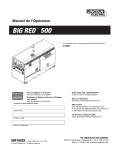
![リーフレット [Leaflet]](http://vs1.manualzilla.com/store/data/006665655_2-9ded072a37ed943497819370476700ec-150x150.png)
